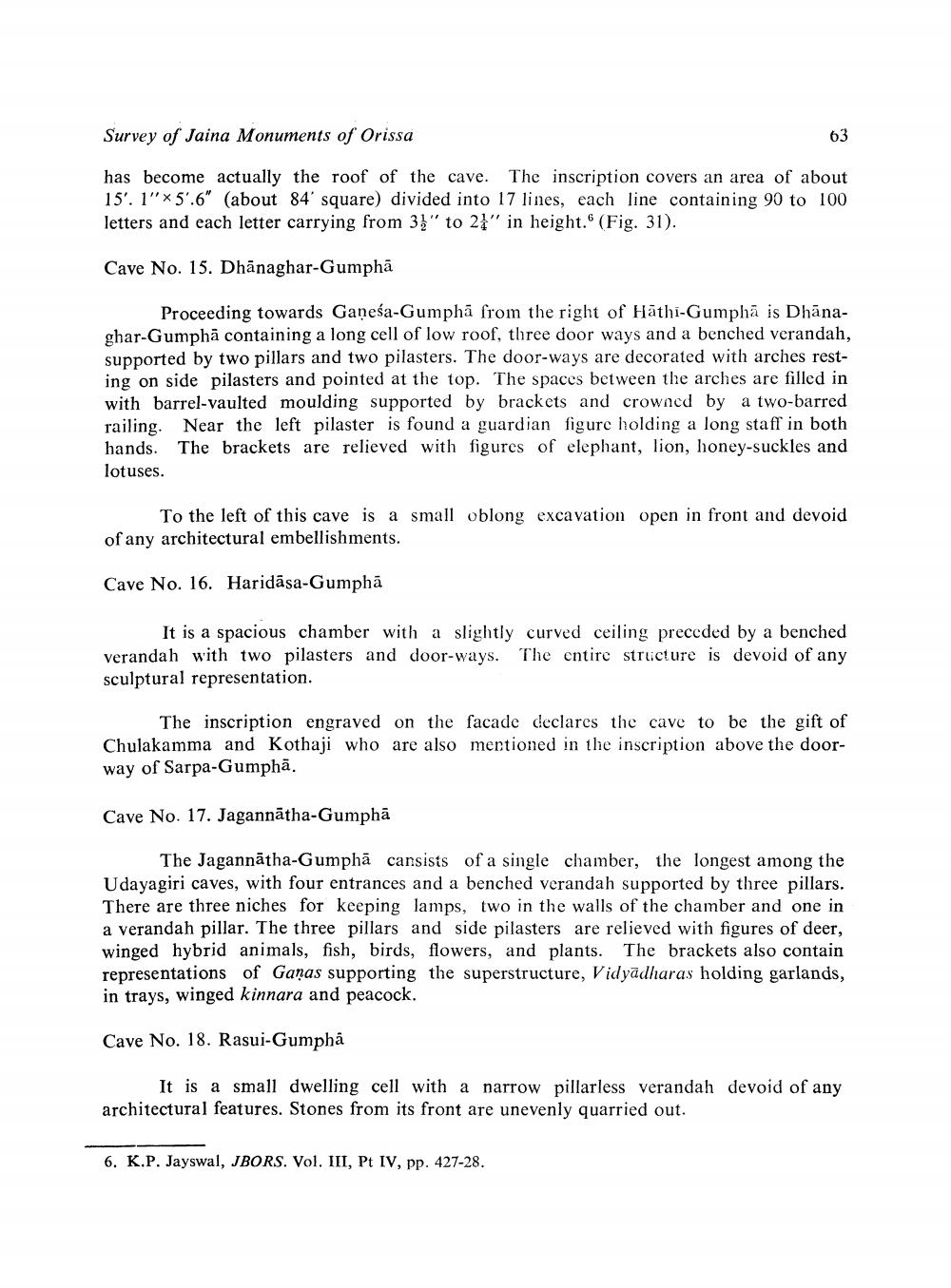________________
Survey of Jaina Monuments of Orissa
63
has become actually the roof of the cave. The inscription covers an area of about 15'. 1'*5.6" (about 84' square) divided into 17 lines, each line containing 90 to 100 letters and each letter carrying from 3}" to 21" in height. (Fig. 31).
Cave No. 15. Dhānaghar-Gumphā
Proceeding towards Ganesa-Gumphā from the right of Hāthi-Gumphā is Dhānaghar-Gumphā containing a long cell of low roof, three door ways and a benched verandah, supported by two pillars and two pilasters. The door-ways are decorated with arches resting on side pilasters and pointed at the top. The spaces between the arches are filled in with barrel-vaulted moulding supported by brackets and crowned by a two-barred railing. Near the left pilaster is found a guardian figure holding a long staff in both hands. The brackets are relieved with figures of elephant, lion, honey-suckles and lotuses.
To the left of this cave is a small oblong excavation open in front and devoid of any architectural embellishments.
Cave No. 16. Haridāsa-Gumphā
It is a spacious chamber with a slightly curved ceiling preceded by a benched verandah with two pilasters and door-ways. The entire structure is devoid of any sculptural representation.
The inscription engraved on the facade declares the cave to be the gift of Chulakamma and Kothaji who are also mentioned in the inscription above the doorway of Sarpa-Gumphā.
Cave No. 17. Jagannātha-Gumphā
The Jagannātha-Gumphā cansists of a single chamber, the longest among the Udayagiri caves, with four entrances and a benched verandah supported by three pillars. There are three niches for keeping lamps, two in the walls of the chamber and one in a verandah pillar. The three pillars and side pilasters are relieved with figures of deer, winged hybrid animals, fish, birds, flowers, and plants. The brackets also contain representations of Ganas supporting the superstructure, Vidyadharas holding garlands, in trays, winged kinnara and peacock.
Cave No. 18. Rasui-Gumphā
It is a small dwelling cell with a narrow pillarless verandah devoid of any architectural features. Stones from its front are unevenly quarried out.
6. K.P. Jayswal, JBORS. Vol. III, Pt IV, pp. 427-28.




